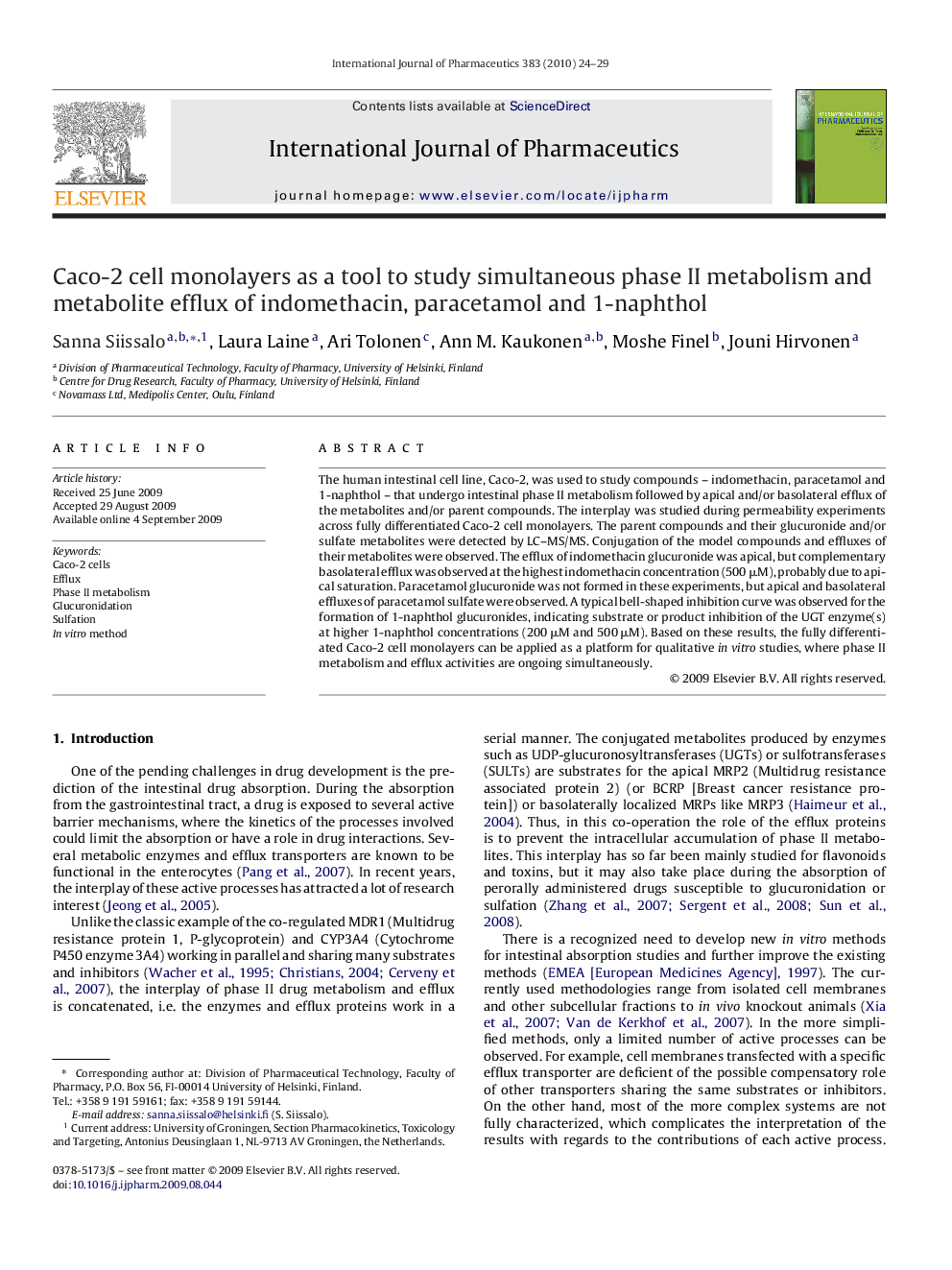| Article ID | Journal | Published Year | Pages | File Type |
|---|---|---|---|---|
| 2504553 | International Journal of Pharmaceutics | 2010 | 6 Pages |
The human intestinal cell line, Caco-2, was used to study compounds – indomethacin, paracetamol and 1-naphthol – that undergo intestinal phase II metabolism followed by apical and/or basolateral efflux of the metabolites and/or parent compounds. The interplay was studied during permeability experiments across fully differentiated Caco-2 cell monolayers. The parent compounds and their glucuronide and/or sulfate metabolites were detected by LC–MS/MS. Conjugation of the model compounds and effluxes of their metabolites were observed. The efflux of indomethacin glucuronide was apical, but complementary basolateral efflux was observed at the highest indomethacin concentration (500 μM), probably due to apical saturation. Paracetamol glucuronide was not formed in these experiments, but apical and basolateral effluxes of paracetamol sulfate were observed. A typical bell-shaped inhibition curve was observed for the formation of 1-naphthol glucuronides, indicating substrate or product inhibition of the UGT enzyme(s) at higher 1-naphthol concentrations (200 μM and 500 μM). Based on these results, the fully differentiated Caco-2 cell monolayers can be applied as a platform for qualitative in vitro studies, where phase II metabolism and efflux activities are ongoing simultaneously.
